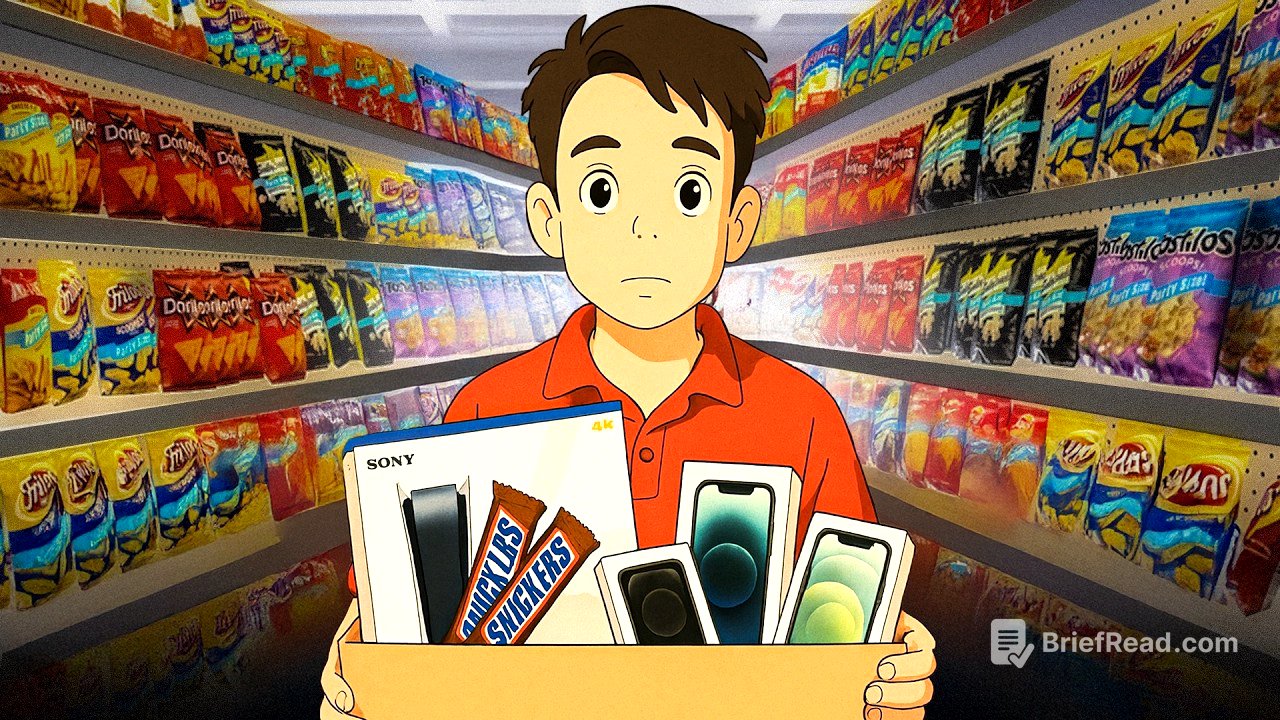TLDR;
This video explores the concept of "dark patterns" - sneaky psychological tricks used by apps and websites to make you spend more money. The video analyzes nine different dark patterns, rating each on a scale of 1 to 10 for how deceptive they are. The video argues that these patterns are becoming increasingly common and that consumers need to be aware of them to avoid being manipulated.
- Up to Discounts: Apps use phrases like "up to 50% off" to mislead customers into thinking they're getting a better deal than they actually are.
- Drip Pricing: Apps hide additional fees and charges until the very end of the checkout process, making it difficult for customers to compare prices.
- Forced Wallet Loading: Apps encourage customers to load money into their wallets, making it harder to track spending and potentially leading to overspending.
- Subscription Shaming: Apps use guilt tactics to discourage customers from canceling their subscriptions, even if they're not getting value for their money.
- Unconventional Units: Apps use unconventional units of measurement (like 450g instead of 500g) to make it difficult for customers to compare prices with other vendors.
- Progress Bar Manipulation: Apps use progress bars to encourage customers to add more items to their carts, even if they don't need them.
- Forced Free Items: Apps force customers to accept free items they don't want, making it difficult to remove them from their carts.
Let's go [0:00]
The video starts by introducing the concept of dark patterns and how they are used by apps to manipulate consumers into spending more money. The video uses the example of online food delivery apps, highlighting how they use various tricks to make customers spend more than they intended.
Dark Patterns Explained [1:32]
This chapter dives into the nine different dark patterns discussed in the video. Each pattern is explained in detail, with examples and real-life scenarios. The video also rates each pattern on a scale of 1 to 10 based on how deceptive it is.
- Up to Discounts (2/10): The video explains how phrases like "up to 50% off" can be misleading, as the actual discount may be much lower.
- Drip Pricing (4/10): The video explains how apps hide additional fees and charges until the very end of the checkout process, making it difficult for customers to compare prices.
- Forced Wallet Loading (5/10): The video explains how apps encourage customers to load money into their wallets, making it harder to track spending and potentially leading to overspending.
- Subscription Shaming (7/10): The video explains how apps use guilt tactics to discourage customers from canceling their subscriptions, even if they're not getting value for their money.
- Unconventional Units (8/10): The video explains how apps use unconventional units of measurement (like 450g instead of 500g) to make it difficult for customers to compare prices with other vendors.
- Progress Bar Manipulation (8/10): The video explains how apps use progress bars to encourage customers to add more items to their carts, even if they don't need them.
- Forced Free Items (10/10): The video explains how apps force customers to accept free items they don't want, making it difficult to remove them from their carts.
Conclusion [11:26]
The video concludes by emphasizing the importance of being aware of dark patterns and how they can manipulate consumer behavior. The video encourages viewers to be critical of the information presented by apps and to make informed decisions about their spending. The video also highlights the ethical implications of using dark patterns and how they can erode trust between businesses and consumers.









